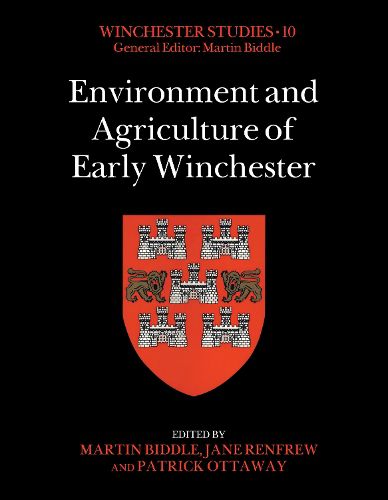Readings Newsletter
Become a Readings Member to make your shopping experience even easier.
Sign in or sign up for free!
You’re not far away from qualifying for FREE standard shipping within Australia
You’ve qualified for FREE standard shipping within Australia
The cart is loading…






This wide-ranging study uses historical and archaeological evidence to consider humanity’s interactions with the environment, fashioning agricultural, gardening and horticultural regimes over a millennium and a half. The discussions of archaeological finds of seeds from discarded rubbish including animal fodder and bedding show the wide range of wild species present, as well as cultivated and gathered plants in the diet of inhabitants and livestock. Pollen analyses, and studies of wood, mosses, and beetles, alongside a look at the local natural environment, and comparison with medieval written records give us a tantalizing picture of early Winchester. The earliest record is by AElfric of Eynsham in his 11th-century Nomina Herbarum. From medieval records come hints of gardens within the city walls, and considerable detail about agriculture and horticulture, and produce brought into the city. Wild fruit and nuts were also being gathered from the countryside for the town’s markets and mills. At St Giles’ Fair exotic imported spices and fruits were also sold. All these sources of evidence are brought together to reveal more fully the roles of agriculture and the environment in the development of Winchester.
$9.00 standard shipping within Australia
FREE standard shipping within Australia for orders over $100.00
Express & International shipping calculated at checkout
This wide-ranging study uses historical and archaeological evidence to consider humanity’s interactions with the environment, fashioning agricultural, gardening and horticultural regimes over a millennium and a half. The discussions of archaeological finds of seeds from discarded rubbish including animal fodder and bedding show the wide range of wild species present, as well as cultivated and gathered plants in the diet of inhabitants and livestock. Pollen analyses, and studies of wood, mosses, and beetles, alongside a look at the local natural environment, and comparison with medieval written records give us a tantalizing picture of early Winchester. The earliest record is by AElfric of Eynsham in his 11th-century Nomina Herbarum. From medieval records come hints of gardens within the city walls, and considerable detail about agriculture and horticulture, and produce brought into the city. Wild fruit and nuts were also being gathered from the countryside for the town’s markets and mills. At St Giles’ Fair exotic imported spices and fruits were also sold. All these sources of evidence are brought together to reveal more fully the roles of agriculture and the environment in the development of Winchester.